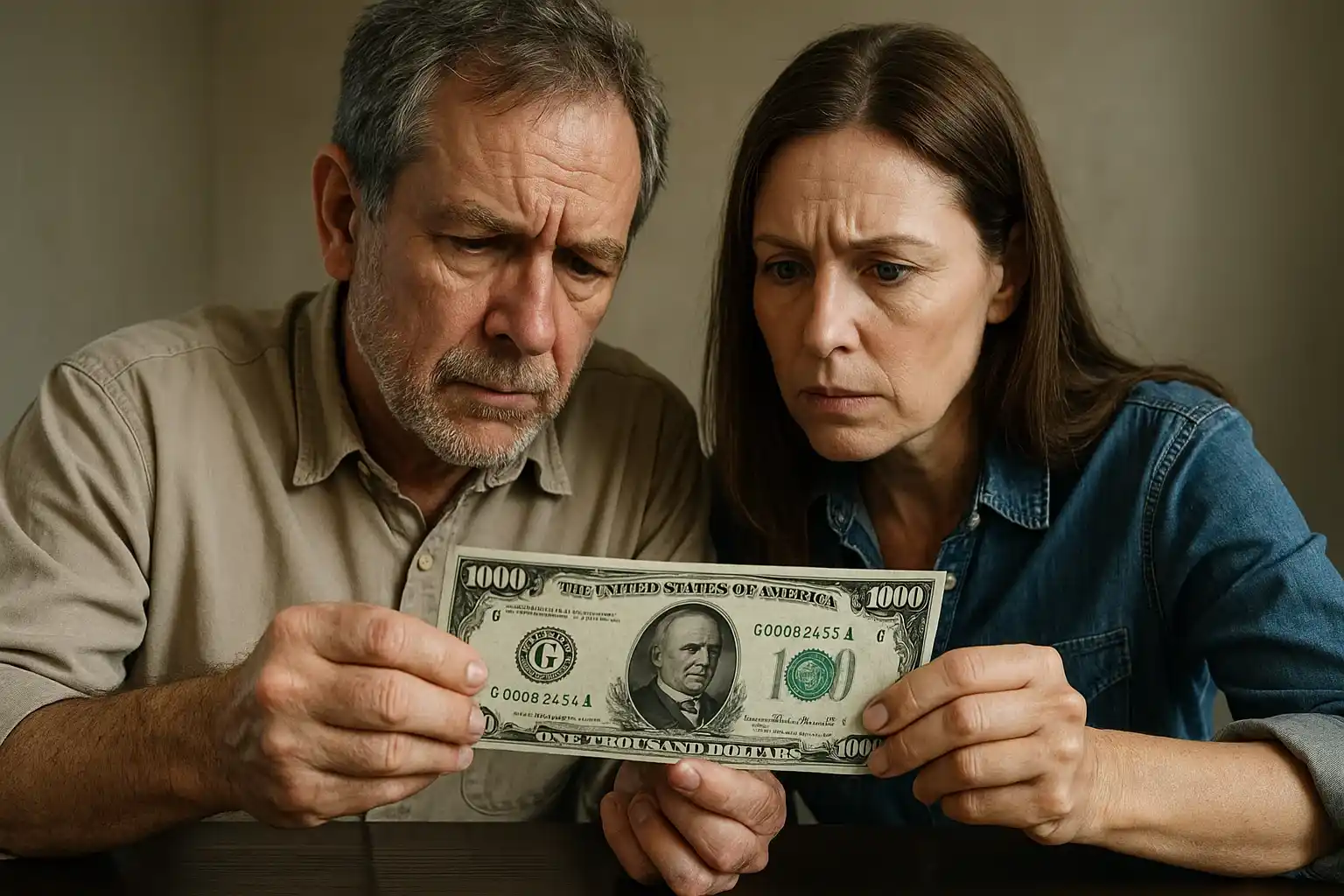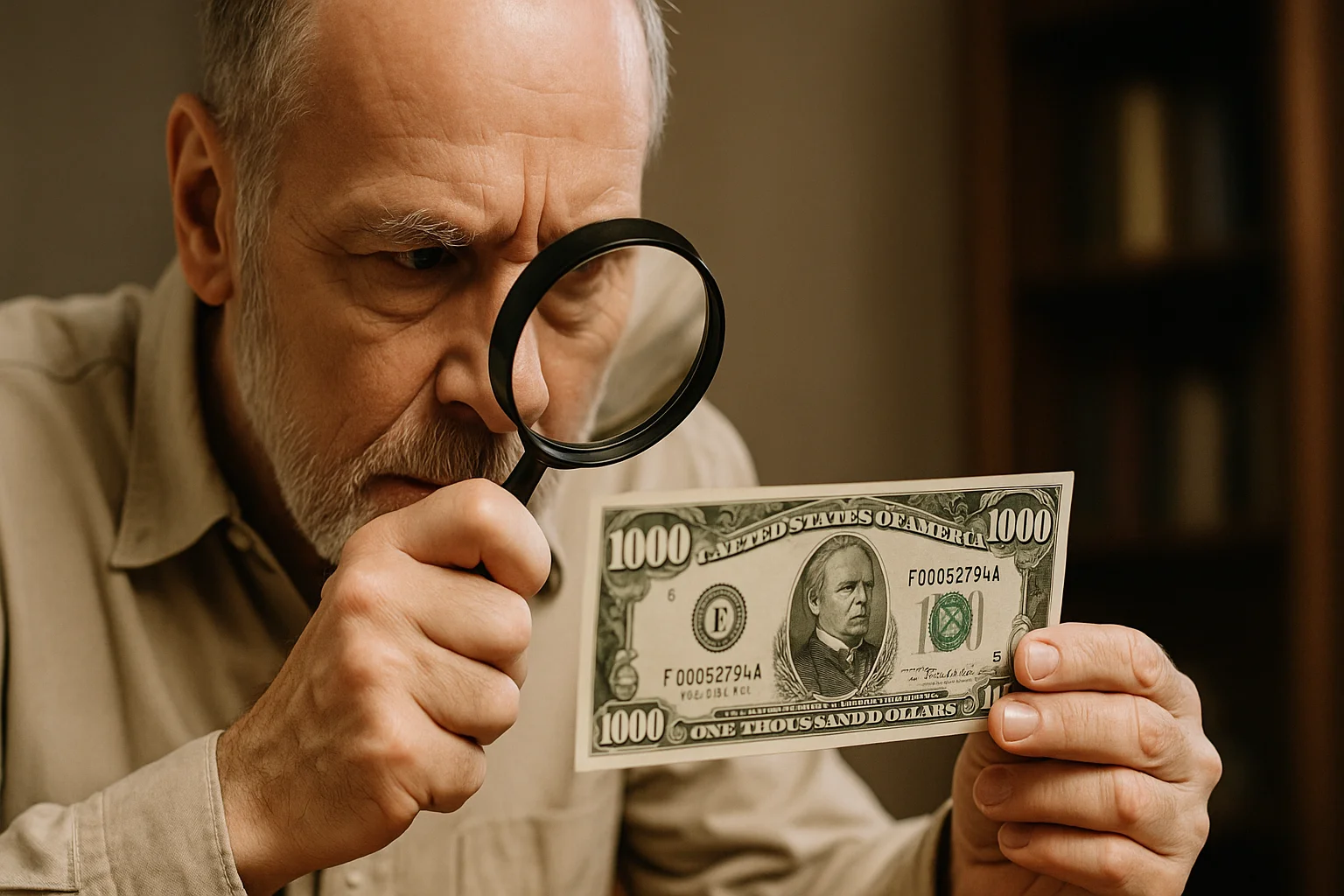The question of who is on 1000 dollar bill doesn’t just spark curiosity among serious collectors — it interests anyone with an interest in rare pieces of American currency. A thousand-dollar note is the thing that most people will never see in everyday life, yet its legend continues to grow. And knowing details like portraits on the bill, how its design has shifted over time, and if it still carries value today is important for understanding why this note is so special.
While older generations relied on books and expert opinions to learn about such rarities, modern tools make the process more accessible. Digital apps, for example, Coin ID Scanner helps collectors and all interested in the theme explore the features and authenticity of collectible money, as well as makes the information search easier even for beginners. But here first things first. Today we discover things about 00 and offer you to start with history and portraits on the bill.
Who Appears on the $1000 Bill
Over the years, the $1000 bill carried the portraits of two significant figures in U.S. history:
Alexander Hamilton (Series 1918): As the nation’s first Secretary of the Treasury, Hamilton played a central role in creating America’s financial system. His portrait on the 1918 series symbolized stability and authority during the period when high-value notes were primarily used for major financial transactions.
Grover Cleveland (Series 1928 and 1934): The only U.S. president to serve two non-consecutive terms, Cleveland represented integrity and reform. His portrait replaced Hamilton in later issues, giving the bill a distinctly presidential connection.
For collectors, it’s not just trivia — knowing who is on the $1000 bill matters. It helps in identifying which series a note belongs to, which in turn influences its rarity and market value. A 1918 Hamilton note tells a different story, and often carries a different price tag, than a 1934 Cleveland issue.

Interesting Facts
The $1000 bill wasn’t created for everyday shopping trips. Instead, it was used mainly for large banking transactions, often to move funds between institutions before digital transfers started to be used. Because of this, relatively few bills circulated in the public’s hands.
By the late 20th century, spotting one outside of a bank vault became nearly impossible. Today, collectors affectionately call it a “legendary note”, a rare bill that blends history, design, and financial symbolism. Owning one is less about the face value and more about holding a piece of American economic heritage.
Is the $1000 Bill Still Issued Today?
The answer is no. In 1969, the U.S. government officially discontinued high-denomination notes, including the $500, $1000, $5000, and $10,000 bills. The main reason was simple: advances in banking technology made such large notes unnecessary, while concerns about their use in illegal transactions grew.
Technically, the $1000 bill remains legal tender, meaning you could walk into a store and spend it. In practice, however, banks and businesses won’t treat it like regular cash. Instead, if one surfaces, it usually gets pulled from circulation and ends up in the hands of collectors.
So where can you actually find one today? The realistic options are:
Specialized auctions where rare currency is featured.
Coin and banknote shows, where collectors display and trade their best pieces.
Private sales through reputable dealers.
For anyone lucky enough to come across one, the advice is simple: don’t rush to use it as spending money. Its value to collectors often far exceeds its face value. Treat it as a piece of history, not just paper cash.
Legal Status and Modern Myths
The $1000 bill still holds a special place in American currency. Although it remains legal tender, in practice banks and businesses treat it differently. If you were to spend one today, the note would almost certainly be removed from circulation and forwarded to the Federal Reserve. Because of that, these bills are rarely — if ever — seen in daily transactions.
Myth 1: “The $1000 Bill Is No Longer Valid”
One of the most common misconceptions is that the $1000 bill lost its legal status. In reality, every $1000 bill ever issued is still recognized as legal tender. You could technically use one to pay a debt, though it would almost always be withdrawn from circulation immediately. Collectors, of course, value them far more highly than their face amount.
Myth 2: “Old Series Have Been Demonetized”
Another myth suggests that certain older issues, especially the 1918 and 1928 series, can no longer be redeemed. This is false. Regardless of the year, all $1000 bills issued by the U.S. Treasury remain legal. The difference lies in rarity — some series are far scarcer and thus worth considerably more to collectors.
Myth 3: “Banks Won’t Accept Them”
While it’s true that banks don’t hand out $1000 bills anymore, they will accept them if presented. However, once a note is deposited, it will be forwarded to the Federal Reserve and permanently removed from circulation. This is why collectors strongly advise against using one for everyday spending — you’d lose an asset that could be worth many times its printed value.
Collector’s Tip: Always rely on official sources such as the U.S. Treasury or the Federal Reserve when checking the legal status of rare currency. Online forums and rumor mills often recycle misinformation that can confuse new collectors.
How to Identify Authentic Notes
When dealing with $1000 bills, authentication is crucial. Counterfeiters have tried to reproduce them, but careful inspection can reveal differences.
Paper quality: Genuine U.S. currency is printed on a unique cotton-linen blend. Counterfeits often feel too smooth or too stiff.
Printing style: Real notes display sharp, raised intaglio printing. Blurry or flat ink is a red flag.
Watermarks and security threads: While older bills lack modern holograms, the texture and depth of authentic printing are unmistakable.
Design details: Look closely at the fine lines and portraits. Genuine engravings are crisp; fakes often look dull or smudged.
Collector’s Advice: If you’re considering a major purchase, send the bill to a professional grading service such as PMG (Paper Money Guaranty) or PCGS Currency. Their expertise ensures authenticity and helps protect your investment.

Rare Series and Varieties
Over the years, the $1000 bill was printed in several distinct series, each with its own features and quirks. Some are noticeably rarer than others, and even minor design elements can affect market value.
Here’s a breakdown of the most significant issues:
Series | Key Features | Notable Rarities | Collectibility |
1918 | Featured Alexander Hamilton on the front; intricate back design. | Less common compared to later issues; prized by advanced collectors. | Very high – early Federal Reserve history. |
1928 | More modern layout, with updated Treasury signatures. | Certain signature combinations are scarce. | High, especially for rare signature pairs. |
1934 | Depicts Grover Cleveland; cleaner, more streamlined design. | Most common surviving series, but still rare in high grade. | Strong, especially in uncirculated conditions. |
Interesting Fact: The 1918 series with Hamilton is much harder to find compared to the later Cleveland notes, making it a standout piece for collectors.
Value of the $1000 Bill
The price of a $1000 bill depends on several factors: condition, rarity, series, and even small details like the type of paper or signature. While circulated examples might bring in a few thousand dollars, pristine notes can command tens of thousands at auction.
Grade / Condition | Typical Price Range | Notes |
Heavily Circulated | $2,000 – $3,000 | Often with folds, tears, or stains. |
Fine to Very Fine | $4,000 – $7,500 | Solid collector demand, moderate wear. |
Extremely Fine | $8,000 – $15,000 | Crisp, lightly handled examples. |
Uncirculated / Gem | $20,000+ | Exceptional rarity; often auction highlights. |
Pro Tip: Always purchase high-value currency from trusted dealers or auction houses. The market for counterfeits is active, and inexperienced buyers can easily fall victim to scams.
$1000 Bill as an Investment
Should you think of the $1000 bill as an investment, or simply a collector’s prize? The truth lies somewhere in between. Let’s break it down.
The Bright Side
On the positive side, the $1000 bill has a timeless appeal that few collectibles can match. Because it is both rare and historically significant, many collectors see it as a reliable long-term store of value. Owning one doesn’t just add to your portfolio — it adds prestige to your entire collection.
Rarity grows — These notes aren’t being printed anymore, so supply will only shrink.
Collector demand is steady — High-denomination U.S. notes have global appeal, not just among American buyers.
Prestige factor — Owning one places you in a small circle of elite collectors, which can drive future value.
The Risks
Of course, no investment is free from downsides, and the $1000 bill is no exception. Its value can rise impressively, but it can also stagnate or even fall if the market cools. This makes it important to handle the note not with short-term profit in mind, but with patience and perspective.
Market swings — Currency collecting is niche, and demand can fluctuate more than with gold or silver coins.
Liquidity issues — Unlike bullion, selling a $1000 bill takes time and depends on finding the right buyer.
Condition sensitivity — Prices can collapse if the note isn’t in top shape. Even minor stains or folds dramatically reduce its worth.
Final advice: So, deal with the bill as a long-term investment. Compare it with rare coins, which tend to have broader markets, but don’t underestimate the unique historical charm of high-denomination banknotes. Many experienced collectors buy them for profit and for the joy of preserving a piece of American monetary history.
Final Thoughts
This note may no longer circulate, but it hasn’t lost its ability to capture attention. Some people consider this note as an investment, but others, at the same time, treat it as a showpiece that is worth talking about. But in common, the bill's rarity, history, and striking design ensure that whenever one surfaces, it instantly becomes the jewel of any collection.
